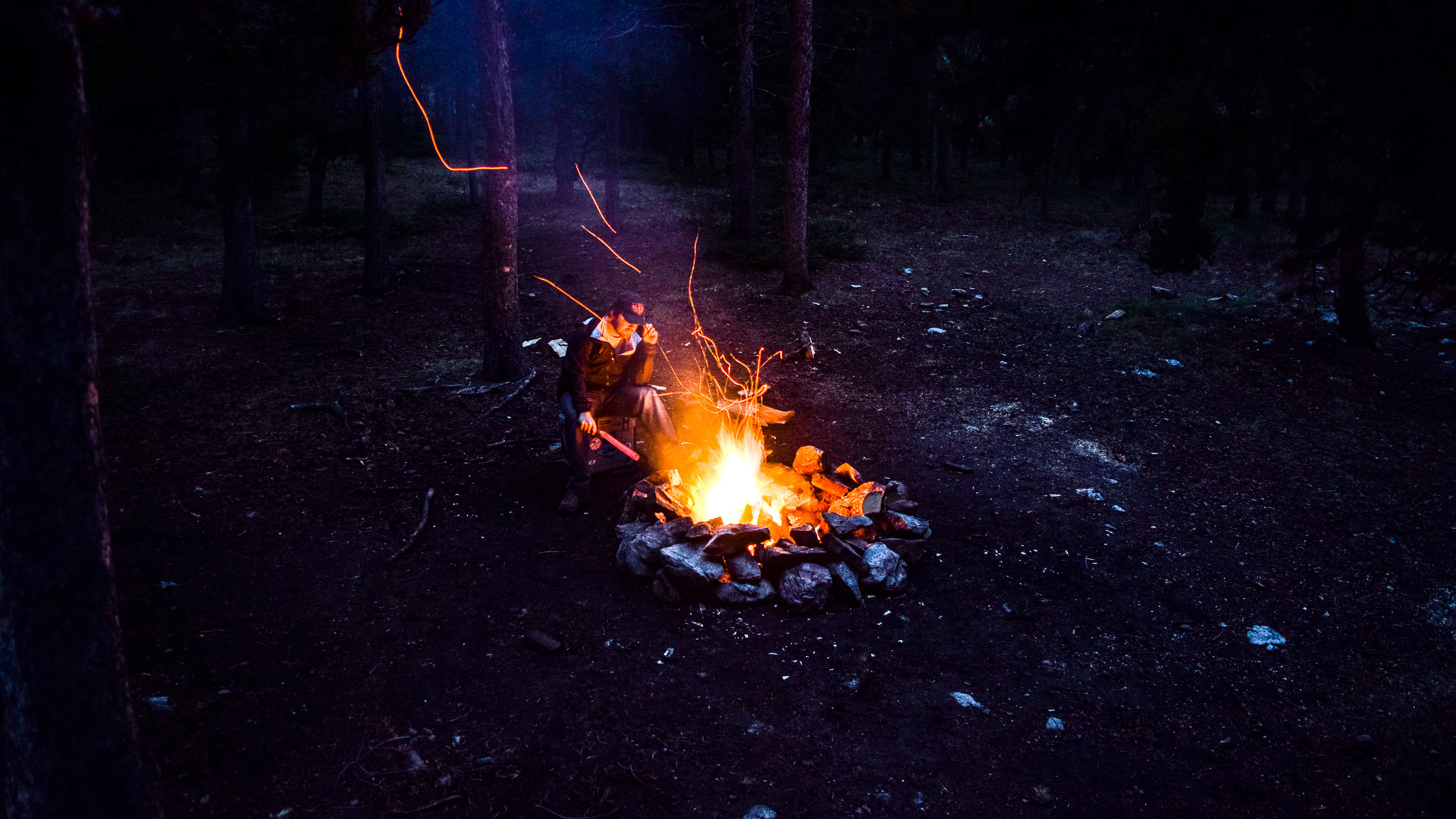
America’s national parks — they’re the stuff of daydreams and bucket lists. Towering mountains, magnificent waterfalls and wide-open spaces for backpacking, camping, climbing, photography and spotting wildlife dot the nation’s landscape from coast to coast. But while places like Yosemite Valley and the Grand Canyon have the ability to make life-changing memories, sometimes those memories come at a price.
The national parks are wild places, after all. Sometimes Mother Nature still reminds us that when we enter her playground, we are at her mercy. Over the years, scores of people have gone missing or become victims of Mother Nature’s ire inside the bounds of our national parks, and some say the spirits of those who lost their lives in the wild can still be found if you are in these haunted locations at the right time.
The Headless Ghost Of The Old Faithful Inn – Yellowstone National Park
In the early 1900s, Yellowstone’s Old Faithful Inn was a towering wonder of the West. With 327 rooms and enough lumber to make the building the largest wooden structure in the world, the inn had space to spare for travelers making their way west by train.
Few attractions lured in tourists from the East Coast like the namesake geyser situated less than a mile away from the sprawling structure. And in 1915, an ill-fated couple found themselves sauntering into its lobby. As legend tells, the newlyweds set off from New York City with a substantial dowry from the bride’s family, which her new husband began swiftly spending at bars and gambling halls from the Hudson River to Colorado.
By the time they reached Wyoming and passed through the gates of Yellowstone, the couple were nearly destitute. In the face of financial disaster, a series of violent arguments broke out between the lovers inside room 127 of the Old Faithful Inn. The domestic disputes turned grizzly when the husband stormed out of their room one night, leaving his bride behind in the bathtub — without a head.
Days later, staff at the Old Faithful Inn located the missing head sitting inside the hotel’s crow’s nest. And for the past 107 years, her headless apparition has been reported wandering a staircase leading up to that crow’s nest. Apparently, the woman is trapped in an eternal search for her head.
The Grave of Rees Griffiths – Grand Canyon National Park

A two-day, rim-to-rim trek of the Grand Canyon is a bucket-list item for backpackers traveling across the American southwest, but many speed by without realizing they are stepping over haunted terrain and the remains of a former park employee.
In February 1922, trail foreman Rees B. Griffiths was overseeing construction of the Kaibab Trail — a favorite for hikers hoping to make the trek from one side of the Grand Canyon to the other and back. Griffiths, an avid outdoorsman and lover of the park, approached a blast excavation for inspection when a large boulder tumbled down a slope and crushed him.
Griffiths was carried out of the accident alive but perished a few hours later at a camp inside the canyon. The next day, a coffin was made from materials at hand in the camp, and Griffiths was buried alongside the trail, where he remains to this day.
The makeshift pile of rocks marking his grave is located between Black Bridge and Bright Angel Trail. Those who spend time in the canyon at night often report seeing a light hovering over his tomb.
The Man In Mammoth’s Mine – Mammoth Cave National Park
Mammoth Cave National Park houses the largest underground cavern system in the United States. Today, the 82-square-mile park set in the rolling hills of Kentucky is a popular destination for scout troops, spelunkers and sightseers. But during the American Civil War, the cave served a different, strategic purpose.
Throughout the 1860s, Mammoth Cave was mined as a source of saltpeter, a key ingredient in gunpowder fueling much of the momentum of the war. Though mining is still a dangerous endeavor today, mining during the 19th century presented a horde of challenges made even more risky by the technology of the day. Tunnels supported by wooden beams often collapsed. Poisonous gases threatened the lives of workers inside, and the combination of oil lamps and dynamite made for an ever-present threat of explosions.
All of these perils meant plenty of lives were lost in the mines, and legends speak of a lost spirit still haunting the halls of Mammoth Cave.
When the Civil War concluded, the saltpeter mines at Mammoth Cave transformed into a destination for Victorian travelers. And according to a story from a park ranger, those tourists left the area with a terrifying tale.
One day, while leading a tour group through the cave, the ranger paused to point out a passage. Waiting on her group to catch up, she looked back to count her flock. There, lingering far behind the group, she saw a man she hadn’t noticed when they set off. He was wearing what appeared to be a miner’s work clothes: denim pants, suspenders and a striped shirt.
The tour continued, but the mysterious man was never seen again.
The Wailing At Grouse Lake – Yosemite National Park

The sapphire waters of Grouse Lake sit at 8,248 feet, rewarding hikers in Yosemite National Park who trek the six miles on a rocky trail from Upper Blue Lake Campground to their shores.
This tranquil, wilderness lake is a favorite for backpackers who often set up camp nearby. And while most travelers spend the night gazing at a vast blanket of stars laid out in the Sierra Nevada sky, some backpackers report the haunting echoes of tragedy reaching out from the waters across time.
The legend of Grouse Lake dates back to Yosemite’s very first ranger, Galen Clark. In 1857, Clark spent an afternoon alongside Grouse Lake, often hearing a mysterious wail that he believed to be a lost puppy. That evening, Clark joined a group of Native Americans at a hunting camp and asked them about the noise. What those hunters told Clark more than 150 years ago is still repeated by hikers today.
The sound was no puppy, they said. According to their lore, the wailing at Grouse Lake belonged to the spirit of a boy who drowned there generations before. According to Clark, the Native Americans dared not approach the shores of Grouse Lake because the spirit of the boy was known to grab people by the legs and pull them into its waters to drown.
The Ghostly Friend At Devil’s Den – Gettysburg National Battlefield
The site of ferocious fighting during the opening days of July 1863, Gettysburg National Battlefield is now a hallowed slice of Pennsylvania countryside that would be idyllic if not for its gruesome history. And while this sacred park meanders over more than 6,000 acres, one particularly rocky stretch harbors one of the battlefield’s most famous ghost stories.
On July 2, 1863, some 2,500 casualties were recorded as Union and Confederate forces grappled for control over a boulder-strewn piece of terrain known as the Devil’s Den. After the battle, its boulders were covered in blood and littered with the terrible carnage left by artillery salvos and hand-to-hand combat. And if decades of reports are to be believed, the stains of war still linger over this land.
Since the 1880s, park visitors have reported the sounds of gunfire and disembodied war cries echoing from the rocks at the Devil’s Den. And in the 1970s, the first reports of the apparition of a shoeless man wearing shredded clothing first began to emanate from visiting photographers.
On one morning, the disheveled man was said to guide a photographer to a shooting location inside of the den. During the heyday of film photography, he was also rumored to pose for photos — only to disappear when the frames were developed. In modern times, photographers frequently report unexplainable equipment failures in the vicinity.





